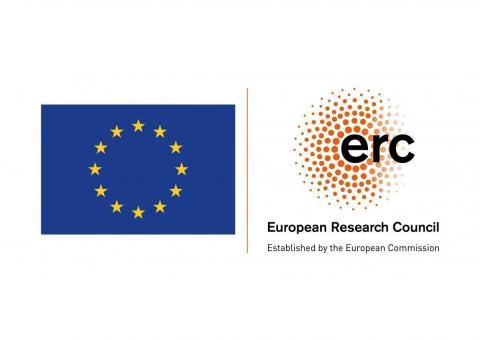
ERC Consolidator Grants 2023 : two laureates linked to Université Paris-Saclay
The European Research Council (ERC) has just announced the 308 laureates of the ERC Consolidator Grants 2023. The funding will support excellent scientists and scholars at a stage in their careers where they may still be consolidating their own independent research teams to pursue their most promising scientific ideas. Laureates are awarded up to €2 million for a period of 5 years. This year, two of the winning projects are linked to Université Paris-Saclay.
The ERC grants were established in 2007, as part of the Horizon Europe programme. They aim to support excellent, cutting-edge research. This year, 308 laureates will receive a total of €627 million in funding to launch their projects, train their teams and turn their scientific ambitions into reality.
Among the 2023 laureates, two researchers from CEA Saclay are linked to Université Paris-Saclay:
Basile Gallet for his project, P-BOT
Basile Gallet, is a researcher at the Condensed Matter Physics Laboratory (SPEC – Univ. Paris-Saclay / CEA / CNRS), where he is head of the team specialised in geophysical fluid dynamics. He has been awarded a grant for his project, P-BOT, dedicated to the dynamics of turbulent flows encountered in astrophysical, geophysical and climatological contexts.
The ocean absorbs 90% of the heat associated with global warming and 30% of anthropogenic CO2. How such tracers are accumulated and redistributed within the turbulent ocean is a central issue of long-term climate prediction. The challenge stems from the existence of ocean mesoscale eddies: turbulent vortices tens of kilometres wide that are not resolved by most climate models despite being key contributors to ocean transport. In the absence of a better theory, the associated transport is parameterised in global models using ad hoc coefficients with arbitrary depth dependence. The project "Physically-Based Ocean Transport" (P-BOT) aims to improve this unsatisfactory state of the art, based on a multi-method approach combining idealised theoretical models, laboratory experiments, numerical simulations and satellite data analysis.
Antoine Strugarek for his project, ExoMagnets
Antoine Strugarek is a researcher at the Astrophysics Instrumentation Modelisation Laboratory (DAP/AIM – Univ. Paris-Saclay/ CNRS/ CEA/ Univ. Paris Cité). He has been awarded a grant for his project, ExoMagnets, dedicated to the magnetic interactions of planets with their environment.
The research in exoplanetary sciences has skyrocketed since the first discovery of planet 51 Peg b by Mayor and Queloz (1995). Since then, more than 5,200 exoplanets have been discovered and have revolutionised our understanding of how star-planet systems are formed and evolve. An increasing number of exoplanets continue to be discovered today, and their characteristics and that of their host star are being determined using space-based and ground-based multi-wavelength observations. Nevertheless, one essential aspect of exoplanets still escapes us: what kind of magnetism and magnetosphere do they possess? On Earth, we know that the magnetic field shields the atmosphere from the space environment and that it has been essential in maintaining life as we know it. With the advent of the SKA Observatory, we expect to detect magnetospheric radio signals from hundreds of exoplanets. These magnetospheres also lead to star-planet magnetic interactions for about a third of known exoplanets, which leave observable traces on the activity tracers of the host star. However, such detections are not enough alone to quantify the magnetic properties of exoplanets due to an incomplete theoretical understanding of magnetic interactions. The ExoMagnets project aims to address the following scientific questions: how do planets interact magnetically with their environments? How much energy is involved, and what observational tracers can be detected? What type of magnetism can be sustained by an Earth in the habitable zone of a low-mass star? The project will tackle these questions by filling in the present theoretical gaps about the magnetic coupling between an exoplanet and its local environment. For the first time, the project will quantify its energetics, its observable multi-wavelength spectrum, and leverage them to constrain the magnetism of exoplanets on short-period orbit. These approaches will be combined to provide the theoretical tools to characterise the magnetism of a large sample of exoplanets.




